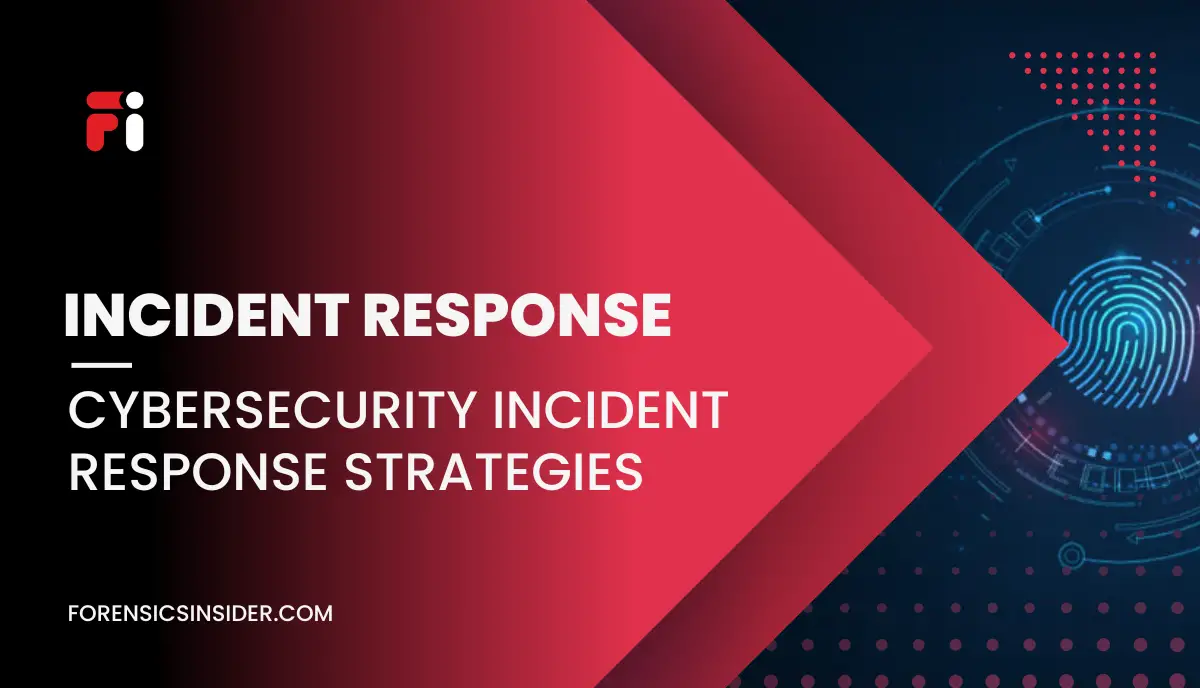In a world where cyber threats loom large and the frequency and sophistication of attacks continue to rise, having a robust cybersecurity incident response strategies is no longer a luxury but a necessity. This summary provides a glimpse into the core strategies that will be dissected in detail throughout this article. From early threat detection to recovery procedures, each facet plays a pivotal role in fortifying our digital defenses.
The urgency of implementing these strategies becomes apparent in the face of an ever-evolving technological landscape. A proactive and well-defined incident response plan is not merely a contingency but a fundamental component of organizational resilience. As we navigate the digital terrain, the imperative to secure our virtual assets underscores the gravity of understanding and implementing effective cybersecurity incident response strategies. Join us on this journey as we unravel the layers of preparedness and vigilance required to protect your digital landscape in today’s tech-driven world.
What is Incident Response Plan (IRP) in Cybersecurity?
In an era dominated by technological advancements, the significance of cybersecurity cannot be overstated. Incident response (sometimes called cybersecurity incident response) refers to an organization’s processes and technologies for detecting and responding to cyberthreats, security breaches or cyberattacks. As our lives become increasingly intertwined with digital platforms, the need to protect sensitive information and digital assets has never been more critical.
Cybersecurity serves as the frontline defense against a myriad of threats, ranging from malicious attacks to data breaches. Within this realm, one key aspect takes center stage – “Cybersecurity Incident Response Strategies.”
The term suggests a proactive strategy in handling cybersecurity incidents, emphasizing the need for both prevention and effective response. In this guide, we’ll delve into cybersecurity incident response strategies, revealing methodologies for organizations and individuals to secure their digital landscape.
- Event — a change in system settings, status, or communication. Examples include server requests, permissions update, or the deletion of data.
- Alert — a notification triggered by an event. Alerts can warn of suspicious events or of normal events that need your attention. For example,the use of an unused port vs storage resources running low.
- Incident — an event that puts your system at risk. For example, theft of credentials or installation of malware.
Understanding Cybersecurity Incidents
In our exploration of cybersecurity incident response strategies, it’s paramount to begin by comprehending the very essence of cybersecurity incidents.
A cybersecurity incident is any malicious activity or security breach threatening digital information’s confidentiality, integrity, or availability. These incidents span various cyber threats, including malware attacks, phishing schemes, and sophisticated forms of intrusion.
Understanding the potential impact of cybersecurity incidents is crucial. The ramifications extend beyond just technological disruptions; they can lead to financial losses, reputational damage, and compromise the trust of stakeholders. The ripple effect of inadequate incident response can be far-reaching, underscoring the need for a proactive and strategic approach.
The Anatomy of Cybersecurity Incident Response
Now that we’ve established a foundational understanding of cybersecurity incidents, let’s delve into the intricate framework of an effective cybersecurity incident response plan.
A successful incident response plan is multifaceted, involving a well-coordinated set of actions. From the initial stages of preparation and identification to the critical steps of containment, eradication, and recovery, each component plays a crucial role in mitigating the impact of a cybersecurity incident. The process doesn’t end there; continuous improvement is facilitated through a thorough analysis of lessons learned.
The acronym PICERL encapsulates the key stages of incident response: Preparation, Identification, Containment, Eradication, Recovery, and Lessons Learned. This structured approach ensures a systematic and comprehensive response to incidents, minimizing damage and facilitating a swift return to normalcy. As we unravel the layers of PICERL, we uncover the strategic elements that form the backbone of an effective cybersecurity incident response plan.
A Comprehensive Overview of the Incident Response Lifecycle
This article explores the six phases of the incident response lifecycle, as outlined by SANS. In contrast to the four-step NIST incident response process, SANS provides a more detailed framework.
These six steps occur in a cycle each time an incident occurs. The steps are:
- Preparation
- Identification of Threats
- Containment of Threats
- Elimination of Threats
- Recovery and Restoration
- Feedback and Refinement
Preparation
During the initial preparation phase, existing security measures and policies are scrutinized for effectiveness. A risk assessment is conducted to identify vulnerabilities and prioritize asset protection. This phase involves refining or creating policies and procedures, including a communication plan and role assignments for incident response.
Identification of Threats
Teams employ tools and procedures established in the preparation phase to detect and identify suspicious activities. When an incident is confirmed, the focus shifts to determining the nature, source, and goals of the attack. Communication plans are activated to inform relevant parties, and all evidence collected is safeguarded for future analysis and potential legal proceedings.
Containment of Threats
Upon identification of an incident, containment methods are swiftly enacted to minimize damage. Short-term containment isolates immediate threats, while long-term containment applies additional access controls to unaffected systems. Clean, patched versions of systems are prepared for the recovery phase.
Elimination of Threats
After containment, teams work to eliminate attackers and malware from affected systems. This process continues until all traces of the attack are eradicated. In some cases, this may involve taking systems offline to replace compromised assets with clean versions.
Recovery and Restoration
Teams bring updated replacement systems online in the recovery phase. Ideally, systems are restored without data loss, but if necessary, teams determine the last clean data copy and restore from it. The recovery phase extends as systems are monitored to ensure attackers do not return.
Feedback and Refinement
The lessons learned phase involves a thorough review of the response. Teams evaluate what went well, what didn’t, and propose improvements for the future. Incomplete documentation is finalized during this phase, ensuring a continuous cycle of improvement in incident response strategies.
What Does an Incident Response Team Do?
An incident response team, also known as a computer security incident response team (CSIRT), cyber incident response team (CIRT), or computer emergency response team (CERT), is tasked with executing your Incident Response Plan (IRP).
The primary responsibilities of your CSIRT encompass the prevention, management, and response to security incidents. This entails thorough research into emerging threats, the formulation of effective policies and procedures, and the education of end-users in cybersecurity best practices.
Frequently Asked Questions (FAQ)
Navigating the landscape of cybersecurity incident response strategies may raise various questions. This FAQ section aims to provide clarity on common queries.
The primary goal is to minimize the impact of a cybersecurity incident by swiftly identifying, containing, and recovering from the threat. A well-executed incident response plan aims to restore normalcy while learning from the experience to enhance future resilience.
The primary goal is to minimize the impact of a cybersecurity incident by swiftly identifying, containing, and recovering from the threat. A well-executed incident response plan aims to restore normalcy while learning from the experience to enhance future resilience.
Employee training is pivotal. It enhances awareness, reduces response time, and empowers staff to recognize and report potential incidents promptly. A well-informed workforce is a valuable asset in the face of evolving cyber threats.
While some aspects can be automated, a human touch is indispensable. Automation can expedite certain processes, but human analysis and decision-making remain crucial for nuanced understanding and adaptability.
Small businesses can start by creating a concise incident response plan tailored to their needs. Emphasize employee training, establish communication protocols, and consider leveraging external expertise for guidance and support.
By addressing these frequently asked questions, we aim to provide a comprehensive understanding of cybersecurity incident response strategies, fostering a proactive and informed approach to digital security.
Other Essential Components of Incident Response
As we delve deeper into cybersecurity incident response strategies, it’s essential to explore additional components that amplify the overall effectiveness of incident response.
Employee Training and Awareness: One of the cornerstones of a resilient cybersecurity posture is a well-trained and aware workforce. Educating employees on potential threats, security best practices, and their role in incident response fosters a culture of vigilance. When employees are equipped with the knowledge to identify and report potential incidents, the overall response time is significantly reduced.
Regular Testing and Simulation Exercises
Routine testing and simulation exercises are indispensable for maintaining the efficacy of an incident response plan. By simulating various cyber threat scenarios, organizations can identify strengths and weaknesses in their response strategies. This proactive approach not only fine-tunes the plan but also ensures that personnel are adept at executing their roles during a real incident.
Continuous Improvement and Adaptation: Cyber threats are dynamic and ever-evolving. A successful incident response strategy goes beyond a static plan; it involves continuous improvement and adaptation. Regularly reassess the threat landscape, update response plans based on lessons learned, and incorporate the latest cybersecurity technologies to stay ahead of potential threats.
Conclusion
In conclusion, the cyber landscape demands proactive measures and an adaptable incident response strategy. The significance of robust Cybersecurity Incident Response Strategies is paramount in our digital era. A well-prepared plan is the linchpin against cyber threats, from initial preparation to continuous learning in the PICERL framework, each element safeguards digital assets.
Embarking on securing your digital landscape? Implement the discussed strategies, applicable universally whether you’re an individual, small business, or large enterprise. Foster awareness, conduct exercises, and embrace continuous improvement. Equip yourself to navigate the evolving cybersecurity landscape and safeguard your digital assets for a resilient and secure tomorrow.




